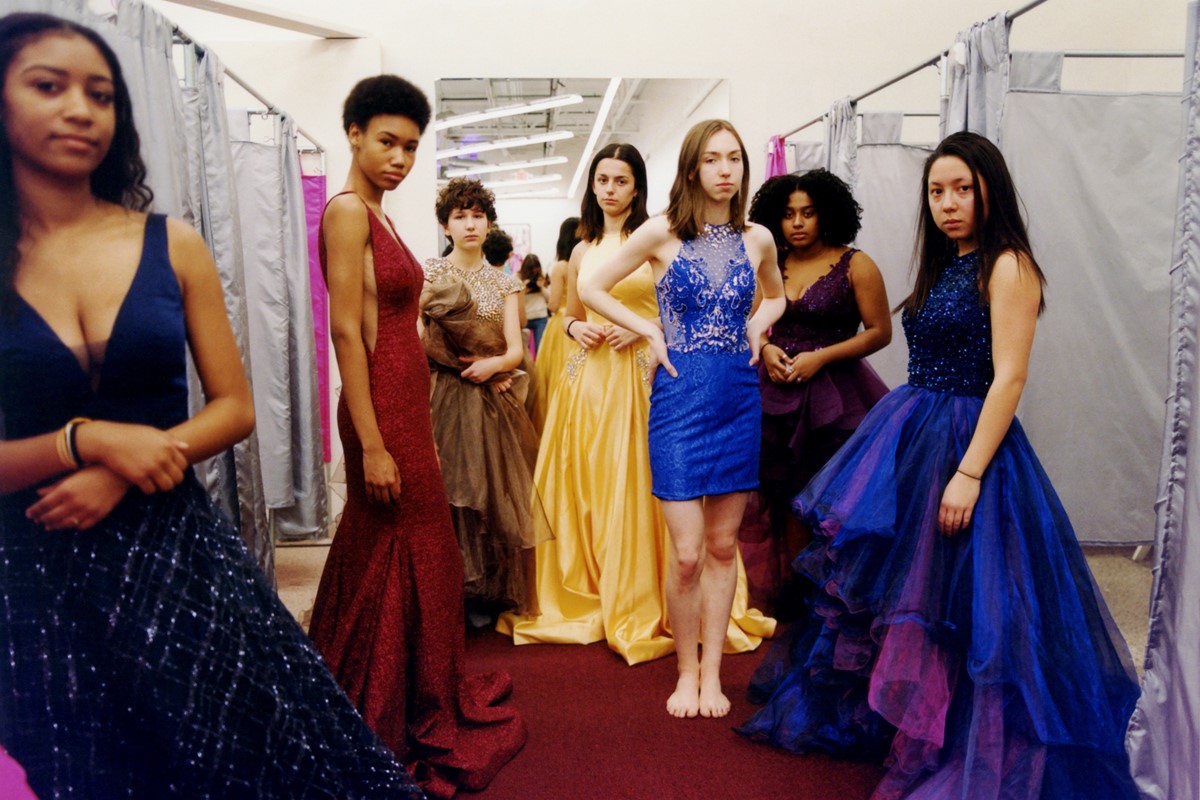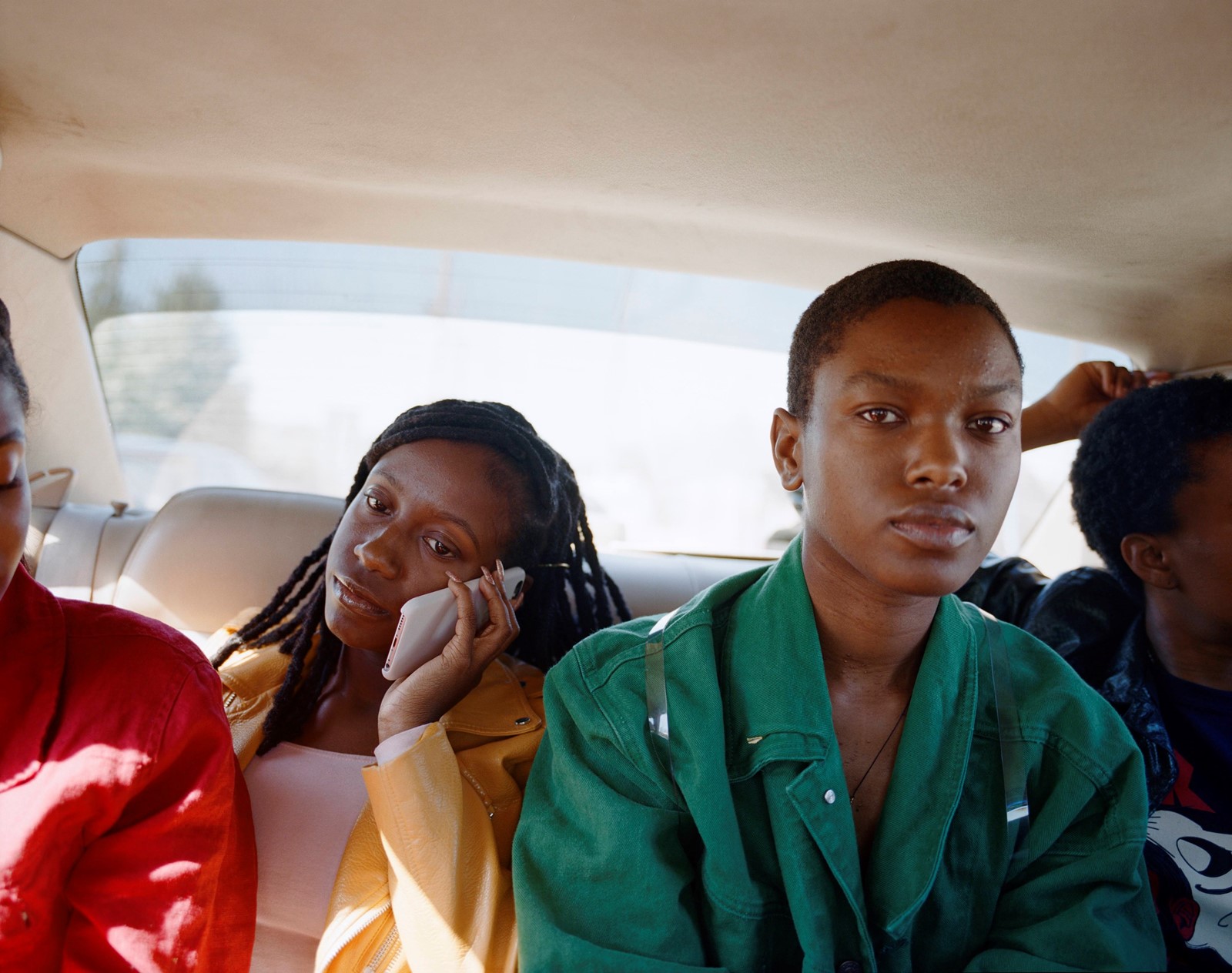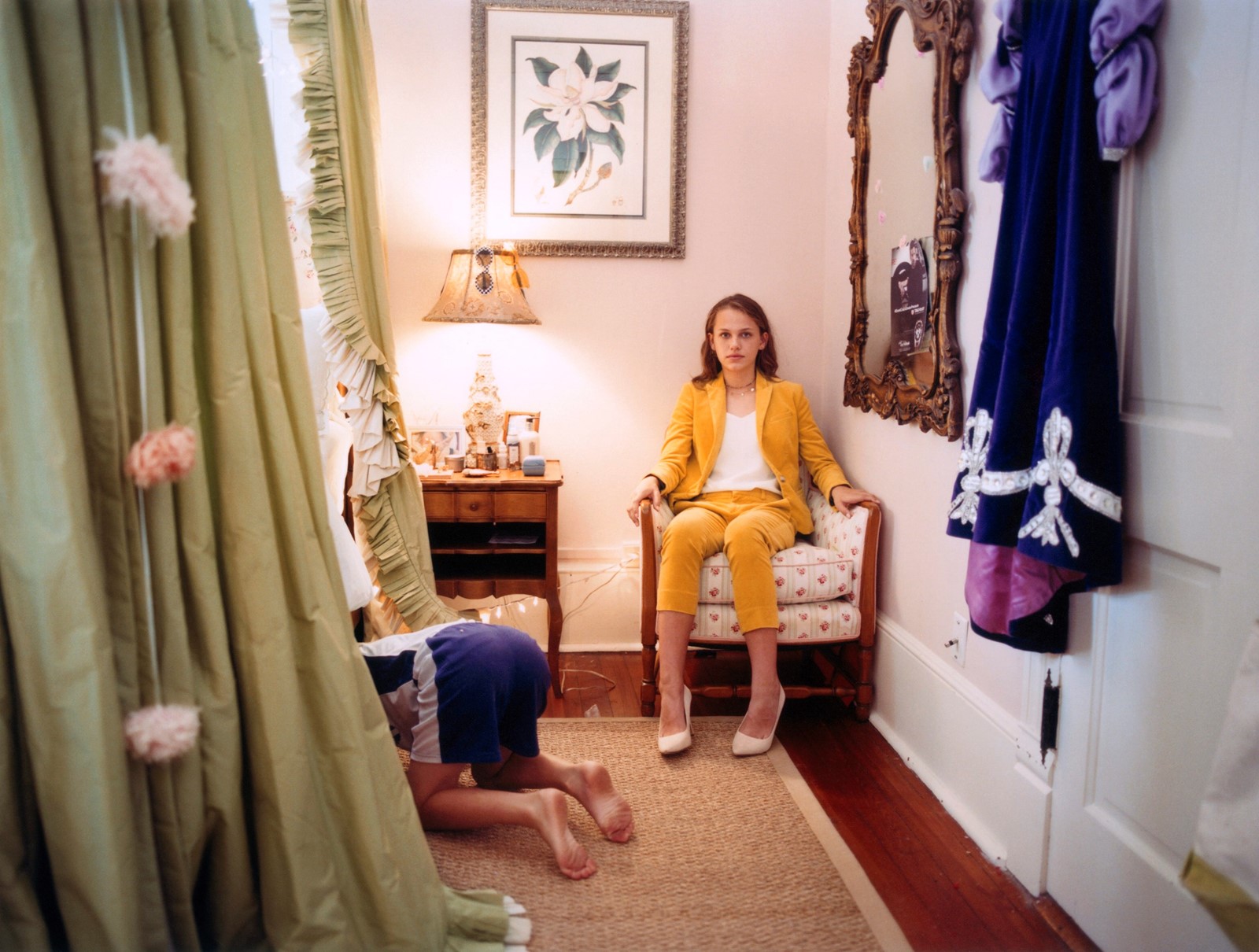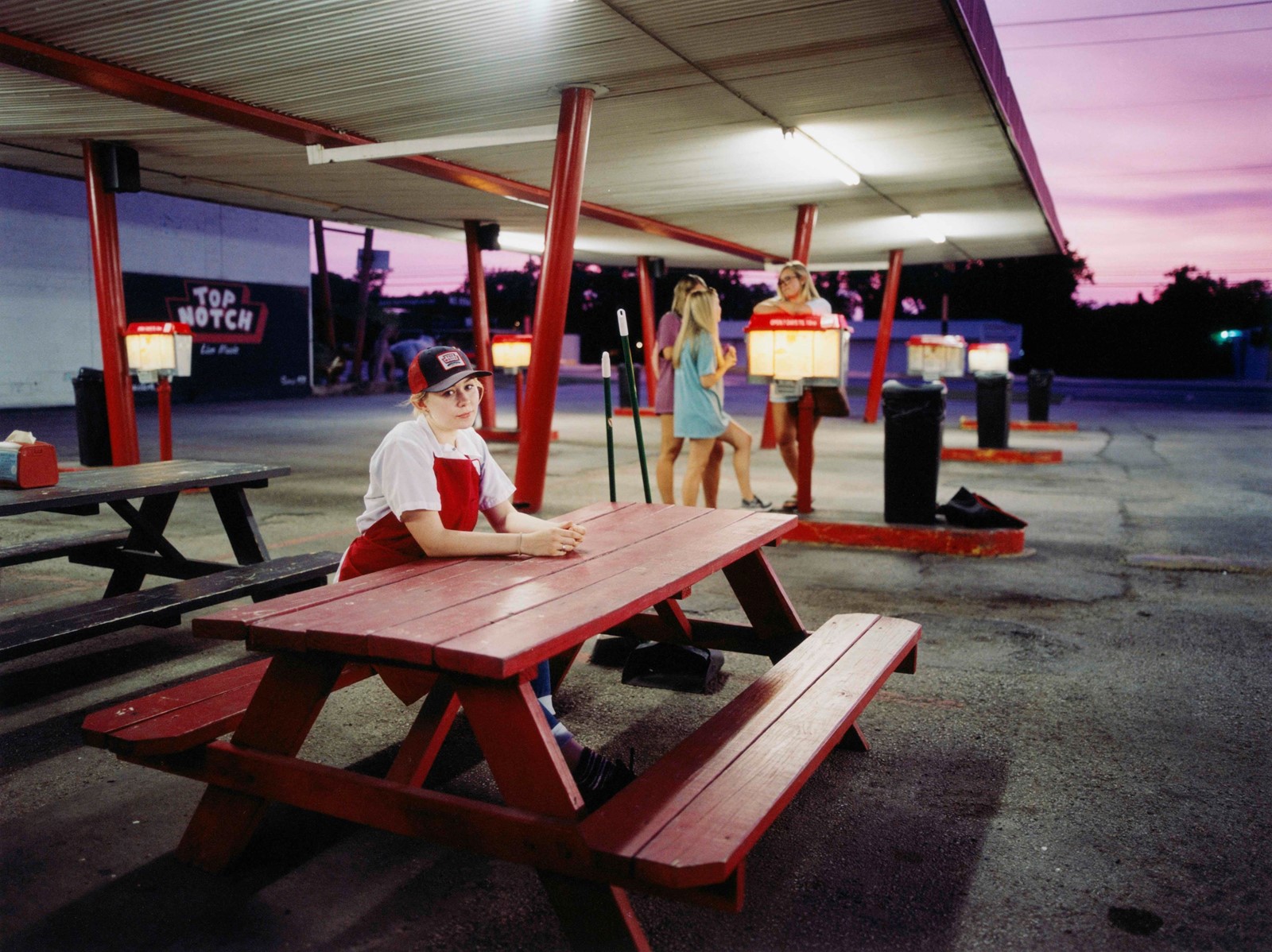
Rewrite
Lead ImagePhotography by Beth Garrabrant
An American photographer and documentary film producer based in Austin, Texas, Beth Garrabrant is best known for her work with Taylor Swift, and for photographing the making of several films and television shows including Problemista, Love Lies Bleeding and The Curse. Her first monograph, Things Shouldn’t Be So Hard, featuring images made between 2001 and 2017, considers how depictions and perceptions of youth affect one’s own experience and memory of being young.
Below, AnOther spoke to Beth Garrabrant about her experience growing up in Lake Forest, Illinois, being introduced to photography by her babysitter, and why she invited film director, Kelly Reichardt, to write the introduction to the book.
Adam Murray: Things Shouldn’t Be So Hard is about the experience of youth. Can you give me some insight into your experience of being young?
Beth Garrabrant: I was born and lived in Westport, Connecticut until I was 11, then my family moved to Lake Forest, Illinois, which is on the north shore of Chicago. The film director John Hughes lived down the street. Most of his movies – Sixteen Candles, Pretty in Pink – take place in this fake town, Sherman, Illinois. Lake Forest was one of the places the fake town was based on. There is also the movie, Ordinary People, directed by Robert Redford, based on a book by Judith Guest, that is a perfect depiction of the town.
I am always careful when I talk about Lake Forest, because it is a very comfortable place to live, but it was also a town that had a lot of darkness. Every year there were tragic accidents or deaths in strange circumstances. Even last year I saw on the news someone from Lake Forest High School died in quicksand. It attracts a very strange energy. Growing up, you almost felt like you were in a TV show.
AM: Were you aware of these depictions in television and movies when you were living there? Did they have an influence on you?
BG: Not at the time. I was more shaped by the small world I was in. Another example that is specific to Lake Forest is that it famously spent millions of dollars trying to stop a McDonald’s from opening on the outskirts of the town. Finally, after years, the McDonald’s was built, but it was housed in a green farmhouse that looked like a barn. No neon lights, and on Sundays there was a chef who would make omelettes in the McDonald’s. People used to travel around the Midwest to see this McDonald’s.

AM: Was photography a part of your life when you were young?
BG: When I was growing up in Connecticut in the late 80s, I had a babysitter called Katie Dunn who would photograph my sister and I for her photography projects. Sally Mann was a huge influence on Katie. We would all go out to the backyard, she would make photographs, and my sister and I loved playing with her camera. So, I knew photography was something to study and something that this person, who I loved, was doing. Some of the portraits in my book I made as an homage to Katie, including the cover image.
When I was in college, I was feeling homesick, and my mum gave me the idea to take pictures in the way that Katie used to photograph the two of us. I started to photograph these two sisters in the town where I was in school, and it is still some of my favourite work.
“Lake Forest attracts a very strange energy. Growing up, you almost felt like you were in a TV show” – Beth Garrabrant
AM: How much of this book is shot in Lake Forest?
BG: Not much at all. It is mostly me trying to recreate scenes that I remember from growing up.
AM: So, most of the book is made up of constructed scenes?
BG: Yes. It is about creating these quiet scenes, these kinds of tropes, almost silences, that were very familiar to me. There is only one image that I would consider as more of a documentary-type image – one of my sister and two cousins watching television.

AM: Adolescent experience in small towns is an ongoing concern for photographers. What do you think your book contributes to this genre?
BG: I am not sure I think about contributing to a genre, I just know what I have experienced and what it looked like. Esther Kroon is a photographer that I really admire. I love the way that she photographed young people and the perspective from which she shoots. I think she was making this work because she wanted to and had to. Once I started to create these scenes it became very satisfying.
AM: You have been collaborating with young people for over 20 years. How did they feel about being featured in your work?
BG: You would think that kids are so self-aware now and that they look at themselves so much. But they rarely even asked to see the photos afterwards. Most of the people in the images are adults now and I wanted to get their permission to include them in the book and see how that felt. It was interesting talking to them about it. They were excited, but for most of them, it felt so long ago, even the pictures that were made in recent years.

AM: Why did you invite film director Kelly Reichardt to write the introduction to the book?
BG: Part of why I love Kelly’s work is how quiet it is. She is not afraid of silence in her films. When I am making my work, I always think about the quiet hum of a room, and I find that it is so much a part of Kelly’s storytelling. Her movies are slices of life that I find so compelling. Ordinary People is like that as well, you feel that life will continue after the credits. That is what I was hoping to create with these pictures – [they are] small scenes that you step into.
AM: How do you think audiences will interpret your work?
BG: The only thing I really want to make clear is that it is not attempting to document kids in America. I do not know how to do that. This book is very much rooted in my own experience.
Things Shouldn’t Be So Hard by Beth Garrabrant is published by Simon & Schuster, and is out on November 12.
in HTML format, including tags, to make it appealing and easy to read for Japanese-speaking readers aged 20 to 40 interested in fashion. Organize the content with appropriate headings and subheadings (h1, h2, h3, h4, h5, h6), translating all text, including headings, into Japanese. Retain any existing
tags from
Lead ImagePhotography by Beth Garrabrant
An American photographer and documentary film producer based in Austin, Texas, Beth Garrabrant is best known for her work with Taylor Swift, and for photographing the making of several films and television shows including Problemista, Love Lies Bleeding and The Curse. Her first monograph, Things Shouldn’t Be So Hard, featuring images made between 2001 and 2017, considers how depictions and perceptions of youth affect one’s own experience and memory of being young.
Below, AnOther spoke to Beth Garrabrant about her experience growing up in Lake Forest, Illinois, being introduced to photography by her babysitter, and why she invited film director, Kelly Reichardt, to write the introduction to the book.
Adam Murray: Things Shouldn’t Be So Hard is about the experience of youth. Can you give me some insight into your experience of being young?
Beth Garrabrant: I was born and lived in Westport, Connecticut until I was 11, then my family moved to Lake Forest, Illinois, which is on the north shore of Chicago. The film director John Hughes lived down the street. Most of his movies – Sixteen Candles, Pretty in Pink – take place in this fake town, Sherman, Illinois. Lake Forest was one of the places the fake town was based on. There is also the movie, Ordinary People, directed by Robert Redford, based on a book by Judith Guest, that is a perfect depiction of the town.
I am always careful when I talk about Lake Forest, because it is a very comfortable place to live, but it was also a town that had a lot of darkness. Every year there were tragic accidents or deaths in strange circumstances. Even last year I saw on the news someone from Lake Forest High School died in quicksand. It attracts a very strange energy. Growing up, you almost felt like you were in a TV show.
AM: Were you aware of these depictions in television and movies when you were living there? Did they have an influence on you?
BG: Not at the time. I was more shaped by the small world I was in. Another example that is specific to Lake Forest is that it famously spent millions of dollars trying to stop a McDonald’s from opening on the outskirts of the town. Finally, after years, the McDonald’s was built, but it was housed in a green farmhouse that looked like a barn. No neon lights, and on Sundays there was a chef who would make omelettes in the McDonald’s. People used to travel around the Midwest to see this McDonald’s.

AM: Was photography a part of your life when you were young?
BG: When I was growing up in Connecticut in the late 80s, I had a babysitter called Katie Dunn who would photograph my sister and I for her photography projects. Sally Mann was a huge influence on Katie. We would all go out to the backyard, she would make photographs, and my sister and I loved playing with her camera. So, I knew photography was something to study and something that this person, who I loved, was doing. Some of the portraits in my book I made as an homage to Katie, including the cover image.
When I was in college, I was feeling homesick, and my mum gave me the idea to take pictures in the way that Katie used to photograph the two of us. I started to photograph these two sisters in the town where I was in school, and it is still some of my favourite work.
“Lake Forest attracts a very strange energy. Growing up, you almost felt like you were in a TV show” – Beth Garrabrant
AM: How much of this book is shot in Lake Forest?
BG: Not much at all. It is mostly me trying to recreate scenes that I remember from growing up.
AM: So, most of the book is made up of constructed scenes?
BG: Yes. It is about creating these quiet scenes, these kinds of tropes, almost silences, that were very familiar to me. There is only one image that I would consider as more of a documentary-type image – one of my sister and two cousins watching television.

AM: Adolescent experience in small towns is an ongoing concern for photographers. What do you think your book contributes to this genre?
BG: I am not sure I think about contributing to a genre, I just know what I have experienced and what it looked like. Esther Kroon is a photographer that I really admire. I love the way that she photographed young people and the perspective from which she shoots. I think she was making this work because she wanted to and had to. Once I started to create these scenes it became very satisfying.
AM: You have been collaborating with young people for over 20 years. How did they feel about being featured in your work?
BG: You would think that kids are so self-aware now and that they look at themselves so much. But they rarely even asked to see the photos afterwards. Most of the people in the images are adults now and I wanted to get their permission to include them in the book and see how that felt. It was interesting talking to them about it. They were excited, but for most of them, it felt so long ago, even the pictures that were made in recent years.

AM: Why did you invite film director Kelly Reichardt to write the introduction to the book?
BG: Part of why I love Kelly’s work is how quiet it is. She is not afraid of silence in her films. When I am making my work, I always think about the quiet hum of a room, and I find that it is so much a part of Kelly’s storytelling. Her movies are slices of life that I find so compelling. Ordinary People is like that as well, you feel that life will continue after the credits. That is what I was hoping to create with these pictures – [they are] small scenes that you step into.
AM: How do you think audiences will interpret your work?
BG: The only thing I really want to make clear is that it is not attempting to document kids in America. I do not know how to do that. This book is very much rooted in my own experience.
Things Shouldn’t Be So Hard by Beth Garrabrant is published by Simon & Schuster, and is out on November 12.
and integrate them seamlessly into the new content without adding new tags. Ensure the new content is fashion-related, written entirely in Japanese, and approximately 1500 words. Conclude with a “結論” section and a well-formatted “よくある質問” section. Avoid including an introduction or a note explaining the process.


